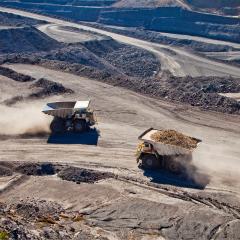Methane emissions from coal seam gas (CSG) production water may be significantly overestimated under current national reporting methods, according to a new study from the UQ Gas & Energy Transition Research Centre.
The study, which was conducted by Dr Julie Pearce, quantified the concentration of dissolved methane in Great Artesian Basin aquifers and CSG production waters to calculate a range of new emission factors. The findings suggest an emission factor of 0.031 tonnes per million litres should be adopted for CSG production water, which is significantly less than the 0.31 tonnes per million litres factor currently used in Australia.
The emission factor for CSG production water was then applied to the total volume of groundwater extracted at Queensland operations to estimate how much methane is being released into the atmosphere during the process.

Dr Julie Pearce said the study provides an evidence-based alternative to current estimates, which are based on overseas modelling.
“The current methane emission factors applied to CSG production waters by the Australian National Inventory Report are based on a modelling study from the United States of America and may not be fit for purpose for the Australian industry.
“The emission factors for CSG productions water determined in our study are an order of magnitude lower than those currently used by the Australian government.
“This means currently methane emissions from CSG production waters are likely being overestimated.”
Accurately estimating emissions from the gas industry is essential for understanding its climate impact and ensuring the effectiveness of Australia’s climate policy tools, including the Safeguard Mechanism.
“In our study, we sampled Walloon Coal Measures coal seam gas production waters, and also aquifer groundwaters to quantify the dissolved methane with two sampling methods.
“The dissolved methane was measured via both closed and open sampling methods, as the commonly used open sampling method can lose methane during the sampling process and underestimate concentrations.
“The methane concentrations were then combined with existing estimates of water extraction volumes to calculate potential emissions and new emission factors for both CSG production water, and separately pumping of groundwater from aquifers.
“Moving forward, we would like to measure and incorporate new dissolved methane data from CSG production waters across a range of Australian CSG fields, well depths, and Basins. Data is also needed for new shale gas extraction, particularly as new operations start in the Northern Territory, and conventional gas extraction.”



